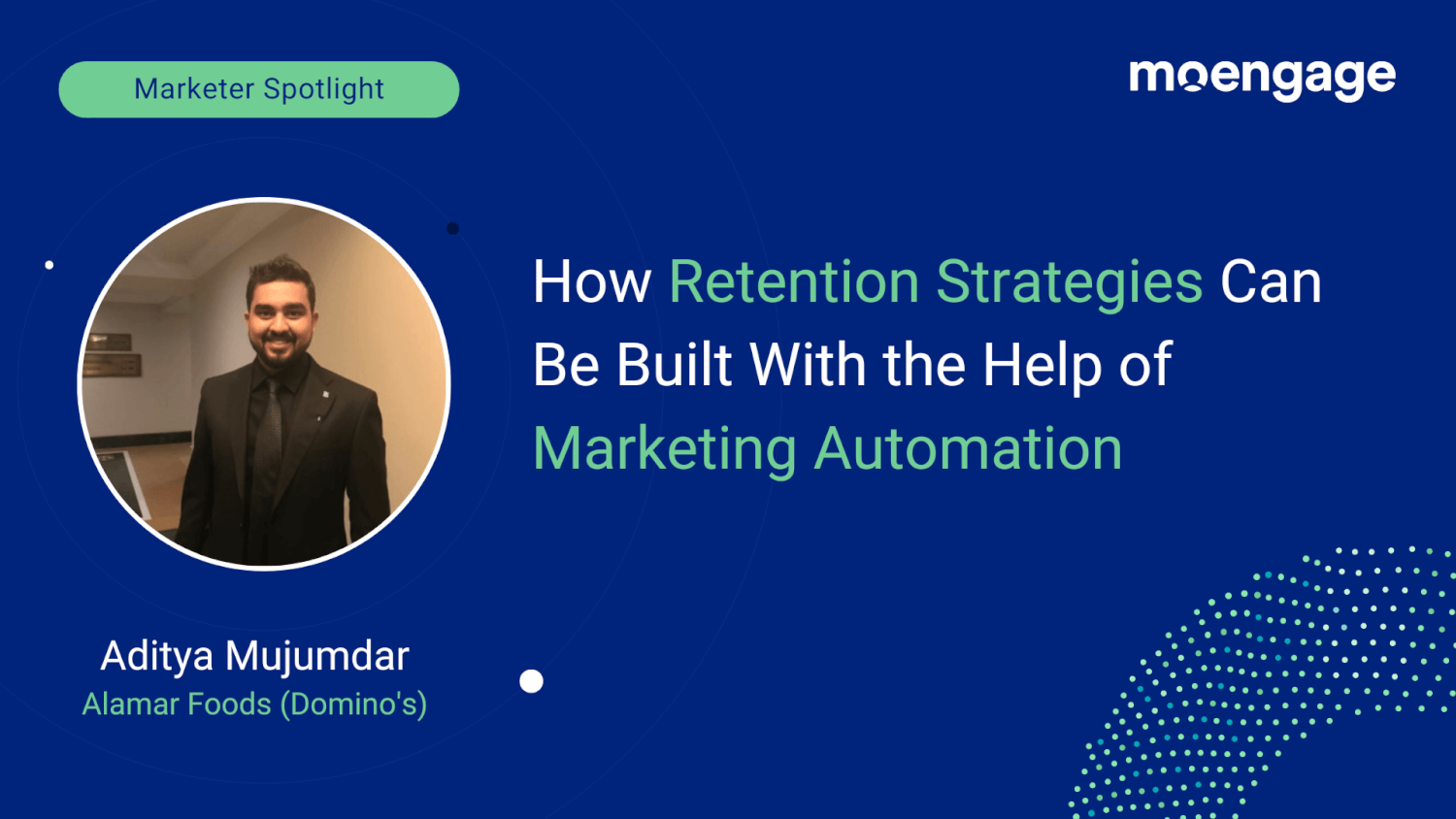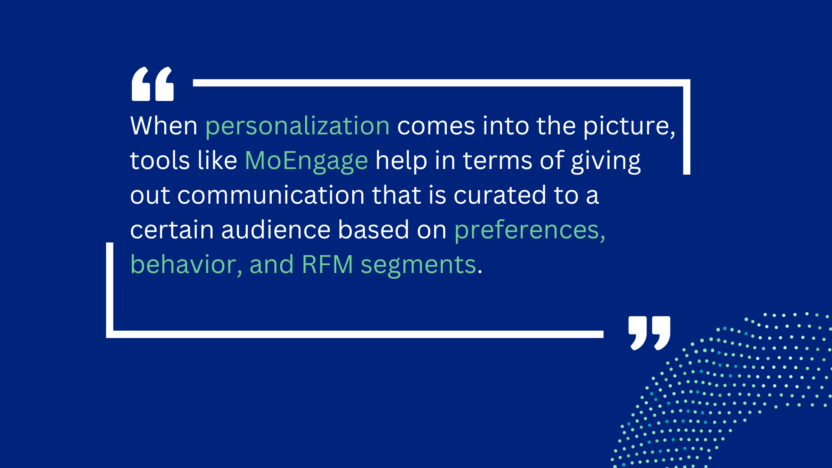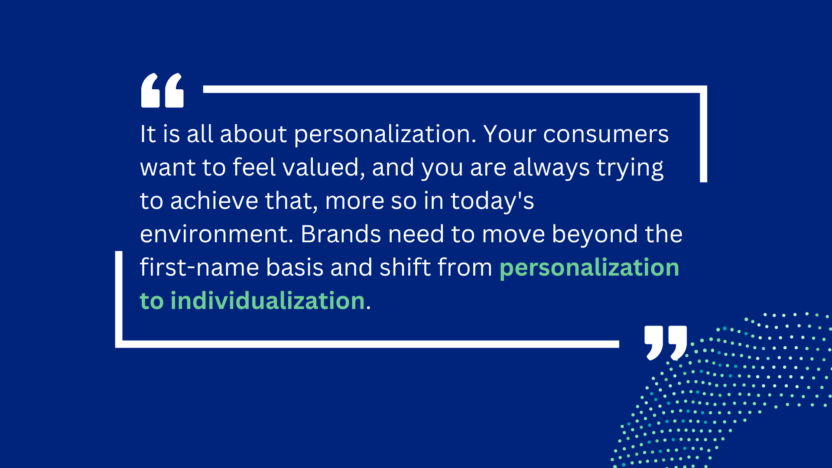How Retention Strategies Can Be Built With the Help of Marketing Automation

Reading Time: 7 minutes
Editor’s Note: Marketer Spotlight is a series of blog interviews focused on sharing insights and best practices from marketing leaders on the various aspects of marketing in a digital world. In this edition, we catch up with Aditya Mujumdar from Alamar Foods (Domino’s) to discuss about retention strategies of B2C brands and how a marketing automation platform can help. Happy Reading:)
Please give a brief introduction about yourself and your professional background.
I have been in the industry for a decade. Started my career with a startup that was started by a few ex-google folks in the digital marketing space. Digital marketing was very nascent at that time and then went on to work with Food Panda, which was India’s biggest online food ordering platform. Post that, worked with an in-house incubator of Zee entertainment called Grob. Now I’m with Domino’s in the Middle East, working for Alamar Group.
That has been the journey – being a hardcore digital marketer. And now, in the new role, it’s more of CRM and data analytics.
In terms of my personal life, I have played table tennis and represented at the state level, then I regularly play squash and like to run marathons.
In your opinion, how important is it to have a retention strategy, especially in today’s uncertain scenario?
As cliched as it sounds, the cost of acquiring a new customer is higher than retaining a customer. Whether a brand is starting off or at a zero to one stage or one to 10 or 10 to 100 stage, whatever the phase may be, retention always remains a key focus. As a brand, you cannot think of just growing the top line at any time. At one instance, you will eventually start ending up focusing on the bottom line because everyone runs a business to make money.
So eventually, retention has to come into play. And the sooner you focus on retention, the better it is for the business (due to the RoI impact). Then your cost of retaining, cost of acquisition, and the cost of the order, everything gets optimized.
It is also a known fact that a returning customer tends to spend more that a new customer because of familiarity with the brand. So it becomes easier for the brand or the business to retain those customers, and once a customer becomes loyal to a particular service or a brand then they tend to recommend it through word of mouth.
Unlike paid marketing, where you spend today, and you start getting the result today, retention is a gradual, painstaking process where you understand the customer needs to start catering to them. You also fix your services to ensure that each and every customer is treated with the utmost care and priority. So yes, retention is key.
Retention remains a key focus for brands across verticals. In your opinion, are there any similarities in the strategies as well?
To a large extent, Yes. The strategies are more or less similar, but the problems they are addressing might be different. If you look at retention, the strategies boil down to what kind of data we have on the customer, and how we can segment those customers based on RFM or behavioral. The ultimate question that remains is – How do we engage with them?
Then, of course, communication becomes key as well. Understanding what they will spend on, and how they will spend also becomes a key factor.
Post that, personalization comes into the picture where tools like MoEngage help in terms of giving out communication that is personalized to a certain audience based on preferences, behavior, and RFM segments.
So the underlying fundamentals of the retention strategy more or less are similar across verticals, the nuances will change based on what stage of the journey you are at.
Pro tip: the richer the data, more refined your strategy becomes.

For example, if you’re an E-commerce brand, and you have the data that someone purchases a 30-pack of diapers. Then you know that the person has a newborn baby. So you can actually reach/engage them with a crib or a bib, and then obviously because they had purchased diapers from you, after some time, reach again out to them and offer them the same pack.
So like I said, the nuances would change, but the KPIs would remain the same largely.
Speaking about digital and the role it plays in a marketer’s life today, how has digital transformation helped B2C brands in upping their retention game?
I think COVID has been the biggest catalyst. In a way, it’s a blessing in disguise to a lot of businesses. Who would have thought medical consultations could happen online? Before 2020, while there were such businesses, like Practo, but the adoption level has been much higher post the lockdown.
- To eventually drive the retention policies, post a customer acquisition, there are so many tools to assist a marketer. If you’re an app-focused company, then the likes of AppsFlyer helps you understand what is the source of installations, how a customer is behaving after the install, what is their install-to-order rate, install-to-open rate, and many other things.
- Post that, you have your CDPs that help you build that database of customers from different touch points of your business, from your POS system, from your E-commerce system, from any other sources of revenue or business that you have and puts them under one roof for you to understand them better.
- Then, of course, the big bigger challenge is how do you communicate with them? And that is where tools like MoEngage come into the picture. They help you in finding a more efficient way to communicate with those customers by doing segmentation.
Apart from these tools, channels also matter. Whether it is push notification, Web Push, WhatsApp, or digital channels, like Google ads, Facebook ads, blogs, videos, or content on YouTube, the way people consume content these days is beyond anybody’s imagination.
For example – On YouTube, you have this show by Neil deGrasse Tyson, where he talks about astrophysics. Now suddenly, one is interested in such things because you can consume content that probably you would not have thought of.
When we talk about insights, as a marketer, one has to look at insights based on the events. For example, we have Ramadan season or any other holiday season. What are some of the insights that you look at? And what is the role of a marketing automation platform in that?
Ramadan is a very good topical discussion since it is round the corner.
Some of the insights one looks at during such times are:
- When does a customer open an email
- When do they click?
It all depends on the data you have, and a lot of it is provided by these marketing automation platforms. They enable you to do A/B testing like sending out a message at 5 pm and then at 5:30 pm and so on and so forth. Then ofcourse, evaluating which one has performed the best in terms of open rates and click rates.
|
Then obviously, customer behavior comes into the picture. You understand their affinity and how they interact with a specific product or not. Based on such insights, you personalize your communication and rely on relevant channels to drive efficacy.
When it comes to Ramadan as a shopping festival, while it may get categorized under the same bucket as a holiday season, it is completely different one. So when it comes to forming a campaign during Ramadan, how different is it from other such events?
Since Ramadan is a holy month, as a brand, you talk about empathy, care, and helping people in general. The campaigns, unlike during a shopping festival, do not talk about the price point or the discount. Yes, price remains an underlying factor. But the larger communication is around empathy.
For example – Brands say if you buy from us, we will commit X amount on behalf of you or our target is to reach x amount or x people and you can help us in achieving that. I think even last year, we tied up with the Dubai ambulance and a couple of other charity foundations in the region, where we gave out pizzas to underprivileged people.
So during this period, consumers tend to give back to the community in whatever small way they can, and this complete four-and-a-half week is purely focused on empathy.
And most importantly, it’s the consumers who talk about all these things. So for a brand to resonate with the same kind of communication becomes critical.
What are some of the challenges that you face while forming a retention strategy and how do you overcome that?
Some of the key challenges are:
- Data Silos: A lot of brands will have a lot of data but never at one place. They have the data in silos, and getting all the data to speak one language under one roof, it becomes a big task in itself. You need to have one single source of truth for each and every single channel.
- Reachability to the consumer: It is all about to what extent do you have the information about the customer, whether it is their physical address, email address, phone number, or they have enabled push notifications. All of those things matter. Because for a retention strategy, you would not limit yourself to reaching out to a customer via one single channel. You will always have a strategy around multiple channels.
- Business Prioritization: The business has to prioritize retention from day one. If the business is not prioritizing retention, then no matter what numbers you show, the growth is bound to stop at some point in time.
- Personalization: Finally, it’s all about personalization. Your consumers want to feel valued, and you are always trying to achieve that, more so in today’s environment, where personalization and hyper-personalization has become an overused term. When it comes to personalization, brands need to move beyond the first-name basis and shift from personalization to individualization.

So today, using a blanket to communicate anything and everything to all your consumers will never fetch you the expected results. It is ultimately a message or a communication which is formed specifically for an individual that will give the desired engagement results.
Thank you so much, Aditya, for chatting with us and sharing your thoughts on how brands look at retention strategies and the role of marketing automation.
Readers, you can connect with Aditya for more tips and advice on retention strategies.
What to Read Next:







